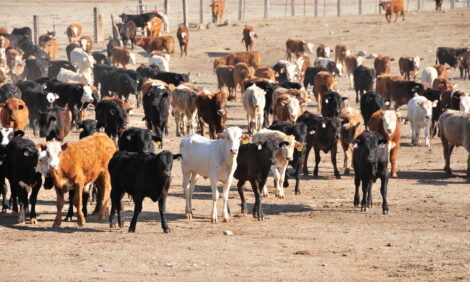



Human Health and Trans Fat in Cattle Products
ALBERTA, US - New University of Alberta study results have uncovered a further positive sign that the major form of natural trans fat in beef and dairy products can deliver health advantages to consumers.The focus of the new study results is on trans vaccenic acid (VA), which is by far the most prevalent natural trans fat in beef and dairy products, and is estimated to contribute 70 to 80 per cent of ruminant-based trans fat in the North American diet, reports CLA Network.
Unlike industrially processed trans fats that are reported to have adverse health effects, natural ruminant trans fats such as VA appear to be different in their actions in the body. Results from early studies using animal models, by U of A researchers, show accumulating evidence that natural trans fats are not harmful and in fact may be very "good for you" from a nutritional and health standpoint.
With growing evidence VA may displace bad fats and reduce chronic disease risk, one of the key questions is how much is actually absorbed when consumed through food products such as beef, milk and yogurt.
The new U of A study is among the first to tackle this question and indicates VA obtained naturally through a meal has a significant rate of absorption in the intestine - over 1 per cent, which is considered nutritionally significant for this fatty acid and its health effects.
The study was conducted using specifically designed diets containing VA, one of which included a beef meal.
"Recognizing the health-enhancing potential of natural VA is one thing, but knowing it is actually absorbed so it can be used in the body is an important finding," says Dr. Donna Vine, the primary investigator of the study at the Metabolic and Cardiovascular Diseases Laboratory at the Alberta Institute for Human Nutrition, University of Alberta. "Our findings add another level of support to the concept that natural trans fats such as VA may be a nutritional advantage for beef consumers and offers a unique marketing advantage for beef products."
The study did not examine VA absorption from a dairy meal, but similar results would be anticipated, says Vine. "The natural VA in both beef and dairy is the same and the levels are comparable, so we would expect to see a similar absorption of VA from these foods."
Pivotal knowledge of VA's health enhancing properties has been established in pre-clinical, animal model studies by U of A researchers and now further investigations are underway, including a dietary VA human clinical trial.
"Collectively, these VA findings have the potential to positively enhance how consumers view the health image of beef and dairy products, which are an important source of many nutrients, including fats" says Vine.
Vine and her U of A colleagues involved in the recent study, including Dr. Catherine Field and Dr. Spencer Proctor, are participants in the CLA Network. The network involves researchers and people in supporting disciplines across Canada who are investigating the health potential of ruminant-based fatty acids such as conjugated linoleic acid (CLA) and VA.
CLA has been the major focus of the network and has shown strong health promise in both animal model and cell culture studies, including the potential to reduce important risk factors for heart disease, diabetes, inflammation and other chronic conditions. VA is known to be a 'precursor' to CLA that can be converted into CLA when consumed by mammals.
While much of the CLA Network effort dealing with VA has concentrated on this precursor role, the evidence of VA's health enhancing potential on its own has driven a stronger focus on VA in new network studies.
Importantly, the recent U of A study also examined how much VA was converted into CLA in the intestine. While there was substantial difference among the treatments – which included a mixed meal, a meal containing beef and a lipid emulsion containing purified TVA – the results indicated large portions of VA were not converted to CLA in the body.
"This may prove to be a very positive finding," says Field. "CLA and VA effects appear similar but are different. There may be potential for overall greater benefit from the combination."
TheCattleSite News Desk


